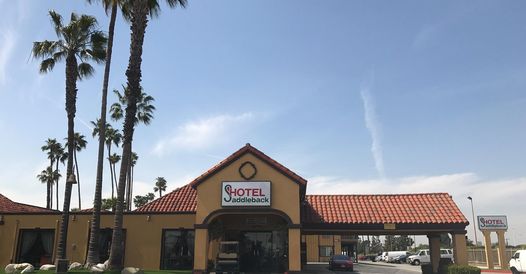By Arnold Adler
Contributing Writer
NORWALK — For residents concerned about the homeless and crime, there’s HOPE.
That is the city’s Homeless Operation Prevention and Engagement team aimed at helping the homeless and easing the burden of the Los Angeles County Sheriff’s Department by handling non-criminal or minor issues dealing with homeless people.
Established in 2018, the HOPE team consists of a lieutenant, one public safety officer, two maintenance workers and a code compliance inspector who works with the team.
“The HOPE team works Monday through Friday from 5 a.m. to 2 p.m.,” said Dennis Kato, interim director of public safety, in a report to the City Council Aug. 17. “However, it only works when service providers are accessible.”
The council voted to receive and file the report.
The city is forming a second HOPE team, approved by the council June 15. Estimated cost of the new staff members is $339,000 a year, Kato said.
That team will work Wednesday through Sunday giving the city a dedicated homeless engagement team seven days a week. It will work a nine-day, 80-hour schedule and be deployed from noon to 10 p.m. Wednesday through Friday and 10 a.m. to 8 p.m. Saturdays and Sundays, with every second Wednesday off, Kato saidd.
According to Kato, the city’s homeless plan helped 102 individuals or families obtain housing from January 2018 to April 2019. It assisted another 287 families with homelessness prevention resources such as rental and utility assistance and provided 96 families with temporary lodging.
“HOPE conducts outreach, educates the homeless on available services, addresses resident and business concerns, conducts clean ups of encampments and assists in enforcement of violations such as trespassing and public intoxication,” Kato said. “Successfully moving a person from the streets to permanent housing or into a treatment program takes time, consistency and perseverance.”
Norwalk is home to two facilities that are part of the collaborative effort between the state and county to minimize the spread of COVID-19 by providing housing to vulnerable people experiencing homelessness, Kato said in his report.
Through Project Roomkey and Project Homekey, a 210-room former hotel and a former 53-room motel in the city have been converted to housing for the homeless.
“Individuals housed in these two locations are free to move about the city of Norwalk during the day as long as they return to the facility at night.
Los Angeles County resources to assist the homeless, including treatment for mental illness and addiction, food, clothing, and other day-to-day needs are stretched thin.
In 2018, the city Council approved a plan to fight homelessness over a three-year period.
The plan included the creation of the Homeless Task Force comprised of multiple city departments, organizations such as People Assisting the Homeless, the Sheriff’s Department, the county Department of Mental Health, and the city’s HOPE team.
Prior to the establishment of the HOPE team, the Public Safety Department received 1,301 homeless-related calls for service. In 2018, homeless-related calls for service jumped to 3,321 (a 155% increase) before increasing again in 2019 to 4,177 (an additional 25.7% increase), Kato said.
Norwalk recorded nearly the same number of homeless-related calls for service in 2020 (4,117).
These numbers reflect only those calls received by the Public Safety Department office and do not include calls received Sheriff’s Department dispatchers, Kato said.
The increase in calls for service was directly related to community outreach that HOPE conducted during the early stages of implementation, and because residents and business people trust the HOPE team to handle homeless-related issues properly, he added.
“The HOPE team also has been instrumental in cleaning up areas in the city where homeless individuals or encampments left large amounts of debris and trash,” Kato said. “The inclusion of maintenance workers on the HOPE team allows the use of heavy equipment during the cleanups without delay
Kato said the HOPE team maintains a list of homeless hot spots in the city based on census tracts. He said those locations are primarily along the San Gabriel River bed, freeways and main thoroughfares.
He said it is hard to determine the amount of crime attributed to homeless people because the Sherif’s Department does not differentiate crimes involving homeless individuals.
“When compared to the map of hot spots, the similarities between the homeless hot spots and where property crimes are occurring is evident,” Kato said.












